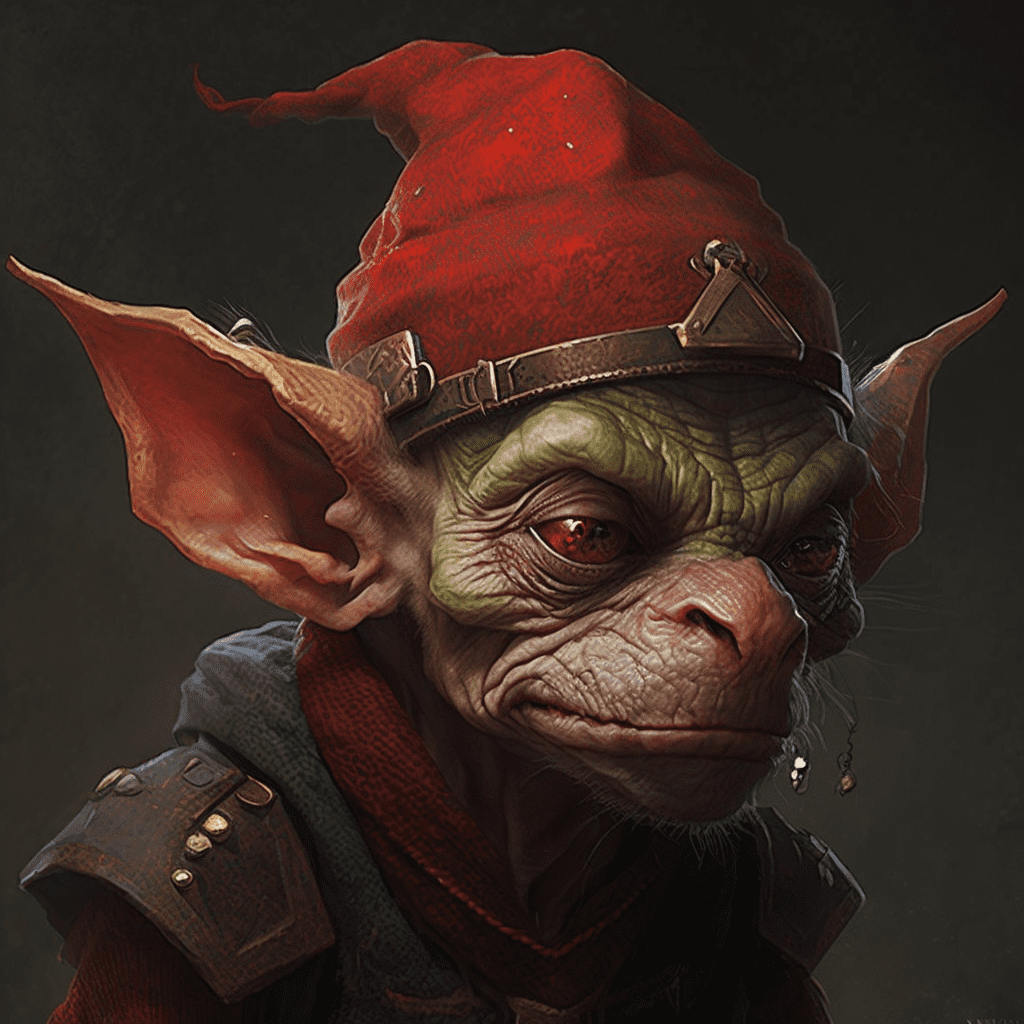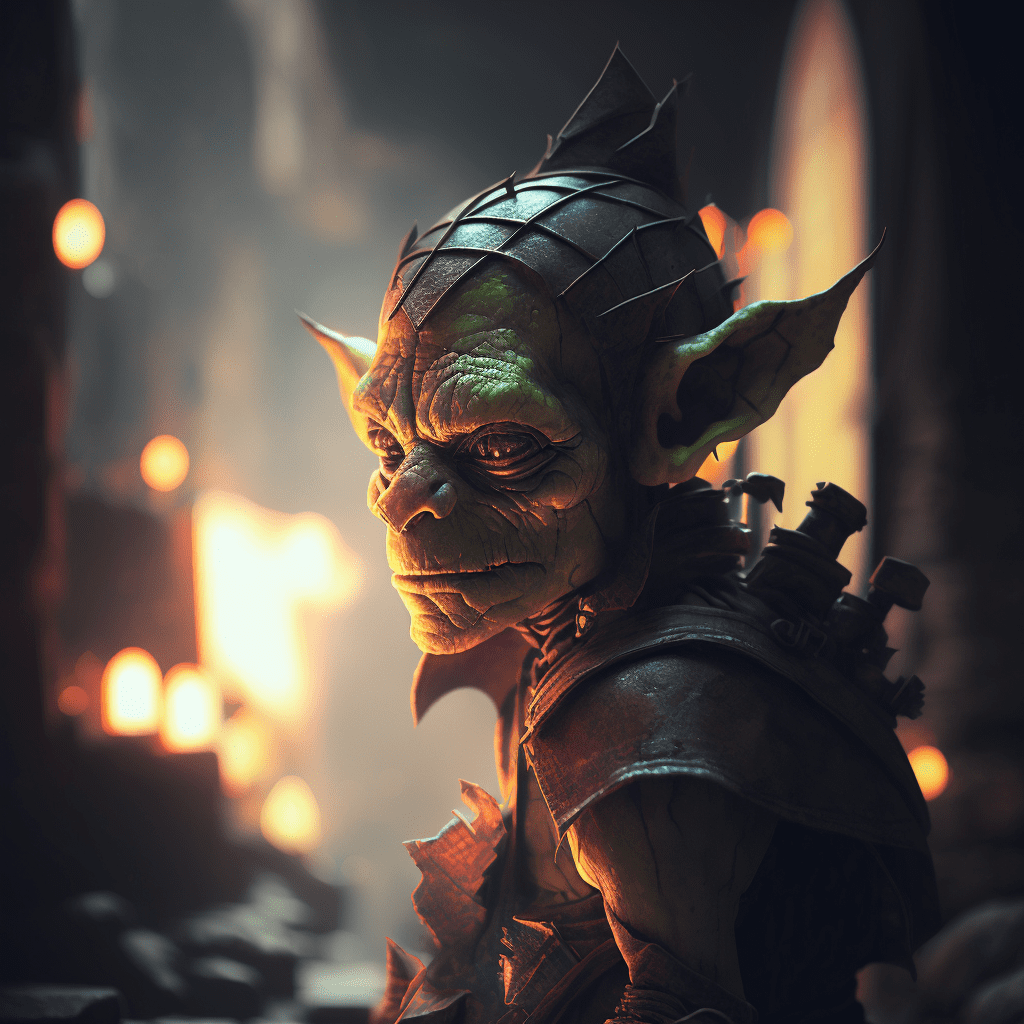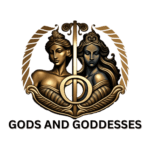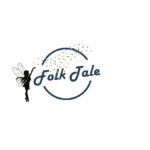goblin
The Goblin is one of the classic monsters of myth. More a class of creature than a single creature itself, it draws from myths across the world. While the classic goblin is fairly easy to describe, the many sub-species of goblin make it the type of creature that can fit into virtually any story.
They tend to work well as generic evil spirits and creatures, the kind of monsters that can be held responsible for everything fromsimple mischiefto trulyhorrifying acts. These are the monsters that are used to explain events that are generally too horrifying the blame on man or nature.
Even the more benevolent goblins in folklore have tended to have amean streak, so they’re also a good example of myths surrounding the importance of keeping one’s word and upholding contracts.

Physical characteristics
One of the real issues with describing the appearance of goblins is that there are several types of goblin. Depending on where in the world you are and when the story was written, goblins can range from the terrifyingly inhuman to monsters who are only differentiated by a few minor features.
There are dozens of different types of builds and bodies, though there are at least a few things that tend to be true. In most cases, goblins areshort. They are not tiny like fairies, but they are generally shorter than the average man.
Most goblins tend to be quite ugly, bordering on hideous or monstrous. They have deformed features, often accompanied by being strangely hairy or havinggrayishorgreenish skinthat is oddly-textured.
Goblins in modern fiction tend to have long, grasping fingers that might end in claws. Most goblins also have decidedly inhuman eyes. Many also havelong and pointed ears.
origin
Goblins are a generallyEuropeaninvention, with the bulk of modern folklore coming out of present-dayGermany. There are, however, goblin-like creatures described virtually everywhere in the world.
Goblins have a tendency to pop up inrural areas, especially in those that are nearforests. They represent an overall fear of the dark and unknown, with the tacit admission that humans can’t necessarily fight back against those things that can’t be seen.
Because goblin myths are so ubiquitous, though, they have the relatively uncommon benefit of being able to fit into virtually any type of myth framework.

powers and abilities
The powers and abilities of a goblin tend to be related to the type of goblin in the story. There are fairly few universal constants in terms of power, with the exception of the fact that they can be relatively stealthy.
Goblins are more likely to be active at night or in hidden places, but some myths do tend to give them the ability toturn invisibleat will. As general trickster monsters, some versions of goblins may also have access tolimited magicand the ability to change shape at will.
In more modern tales, goblins tend to bedeceptively strongfor their size. They are easily able to kidnap and subdue adults, though they often are seen to prey on children and livestock. Goblins may have a certain affinity for gold or for treasure, though they can also be bound by promises and contracts.
Goblins are such a diverse type of monster that it’s safe to attribute virtually any type of behavior or power to these creatures.
types of goblins
A few of the more well-known types include the following:
- Hobgoblin: Hobgoblins are described as helpful, short and hairy creatures. In stories, they can be found doing tasks and chores in homes. They can also at times be mischievous and play practical jokes and pranks on people.
- Brownie: Brownies are very similar to hobgoblins in that they do work at night. They often require food and drink, such as milk or dairy, in exchange for their work. Brownies are generally less mischievous than hobgoblins. Like hobgoblins, they are also small, hairy and ugly, and if they have any clothing at all it is made of old rags.
- Redcap: Redcaps are possibly one of the more grotesque and violent types of goblin. In folklore, they were said to coat their hats in the blood of the people they killed. Tales of these creatures originate from the northern parts of England.
- Hogboon: Hogboons are friendly kinds of goblins that are said to bring luck to a family if they are treated well. The hogboon lives in a mound near a particular family’s home. The family would sometimes leave food for the hogboon.
- Boggart: Boggarts are evil types of goblins that disturb people while they are sleeping. They can pull covers off people or tug on their ears. They may also cause things around the house to go missing. Boggarts are often believed to be hobgoblins that were mistreated or abused.

interesting facts
- They are shorter than average people but larger thanpixies, gnomes and elves.
- Goblins are usually presented as devious, mischievous or evil creatures.
- Stories of these creatures have strong roots in Europe, but can be found in folklore around the world.
- They are frequently referenced with ghostsaround Halloween (e.g. ghosts and goblins).
- Goblins have appeared in several popular movies including the Harry Potter series.
- Underneath the ruins of Yester Castle in Scotland is an ancient hall called Goblin Ha’. People believe the hall was built by demonic forces.
- Goblins have become a go-to in modern fantasy media. They are often the rank-and-file monsters, though many authors have supplanted them with the historically-similar orcs.


